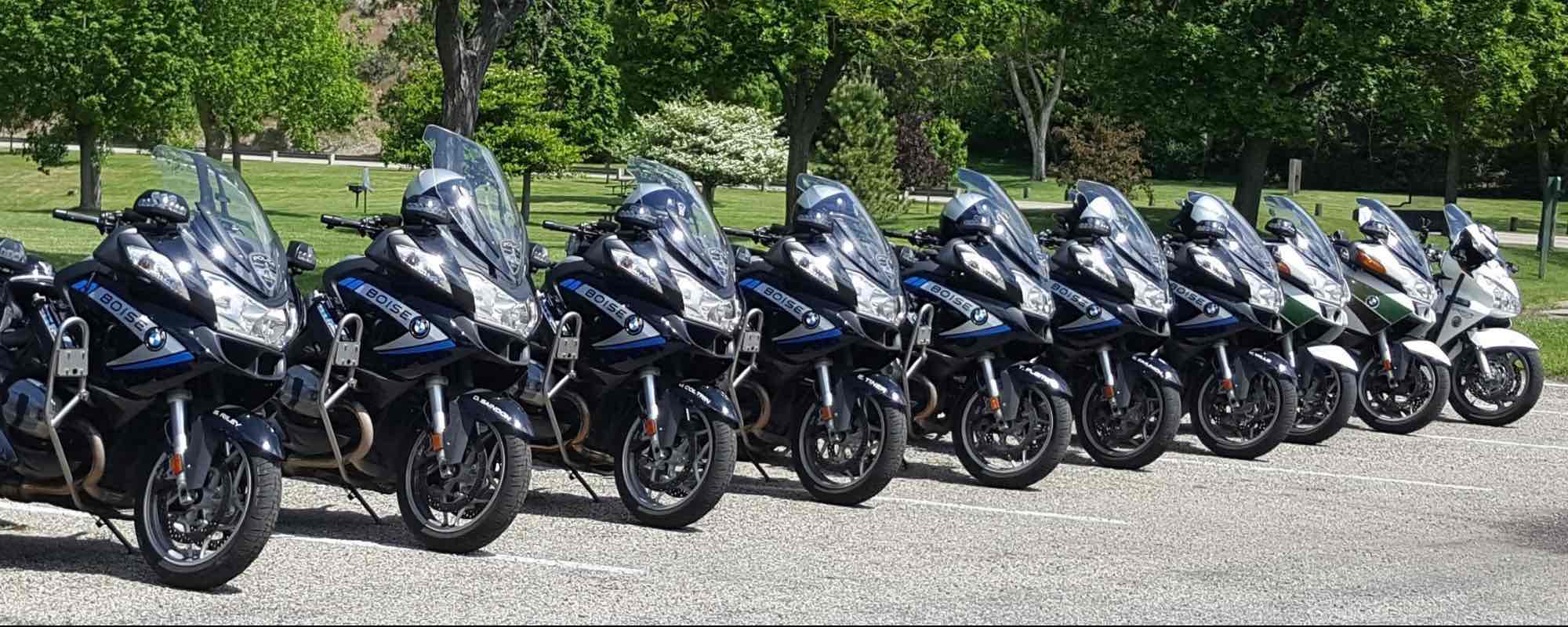
All motorcycle operators must:
1) a motorcycle endorsement (M) on that license, or
2) have a valid motorcycle instruction permit.
Motorcycle operators riding on a motorcycle instruction permit must also adhere to the following restrictions:
The penalty for riding without a motorcycle endorsement can be substantial. Learn about how to earn a motorcycle endorsement in Idaho.
To be street legal, a motorcycle or moped must have:
A motorcycle may share a lane only with one other motorcycle. Lane sharing (lane splitting/filtering) with any other vehicle is illegal in Idaho.
Operators may not transport or carry any object that interferes with their ability to hold the handlebars.
If a motorcycle operator carries a passenger, the motorcycle must have a permanently attached passenger seat and footrests. Passengers are only permitted to ride on a passenger seat behind the operator or in a sidecar.
There are no requirements for passenger age in Idaho. However, operators should use good judgment. Passengers should be large enough to reach the footrests, strong enough to hold on securely and mature enough to follow directions and behave predictably.
After coming to a complete stop, if a traffic light controlled by a vehicle sensor fails to detect the motorcycle after waiting one full cycle of the light, the rider may proceed with caution, yielding to other vehicles.
To ride legally in Idaho, you must have a valid driver license and motorcycle endorsement or instruction permit.
"Autocycles" (three-wheeled vehicles with a steering wheel and bucket seat) do not require a motorcycle endorsement. However, all other types of three-wheelers, including trikes, reverse trikes and sidecars require a motorcycle endorsement. Operators who hold a driver license with an unrestricted motorcycle endorsement do not have to apply for a separate three-wheel endorsement.
Operators who do not hold a motorcycle endorsement and do not wish to test on a two-wheel motorcyle may apply for a restricted (3W-only) motorcycle endorsement. All applicants must pass the DMV motorcycle knowledge test and pass a DMV skill test/road test modified for three-wheeled vehicles to qualify.
Any motor vehicle having a seat or saddle for the use of the rider and designed to travel on not more than three (3) wheels in contact with the ground, that meets the federal motor vehicle safety standards (FMVSS) as originally designed and includes a converted motorbike, but does not include a motor-driven cycle, a motorbike, a tractor or a moped.
A “motor scooter” or “scooter” refers to a wide variety of motorized cycles and toys. A two- or three-wheeled vehicle of any size, manufactured for use on public roadways and sold by a licensed dealer is probably a motorcycle and an endorsement is required. A vehicle with two or more wheels not manufactured for use on public roadways and sold by retail variety stores is probably a toy.
A limited-speed motor-driven cycle having both motorized and pedal propulsion that is not capable of propelling the vehicle at a speed in excess of thirty (30) miles per hour on level ground, whether two (2) or three (3) wheels are in contact with the ground during operation. If an internal combustion engine is used, the displacement shall not exceed fifty (50) cubic centimeters and the moped shall have a power drive system that functions directly or automatically without clutching or shifting by the operator after the drive system is engaged.
Or if powered solely by electrical energy, it has two (2) wheels or three (3) wheels with no pedals, an automatic transmission, and a motor that produces less than two (2) gross brake horsepower, and is not capable of propelling the vehicle at a speed in excess of thirty (30) miles per hour on level ground.
For more information about operating motorcycles, scooters and mopeds in Idaho, refer to Idaho Motorcycle Operator's Manual (DMV).
All information presented on this page is intended for educational uses only. It is not to be used as legal advice. For additional clarification, consult Idaho Statutes or a law enforcement representative.